In today’s fast-paced and ever-evolving retail landscape, the importance of private label kitchen appliances and their packaging cannot be overstated. As consumers seek value, convenience, and sustainability, the private label market has seen significant growth, particularly in the European and American markets. This article delves into the key factors fueling this demand, the strategic focus on packaging, the role of design and sustainability, consumer perceptions, and the innovative trends shaping the sector. Through case studies and a forward-looking perspective, we aim to provide insights into the challenges and opportunities within the private label kitchen appliance packaging sector, while also offering a glimpse into the future outlook and potential growth opportunities.
Understanding Private Label Kitchen Appliances: A Brief Overview
Private label kitchen appliances have become a significant force in the global home appliance market, offering consumers a wide range of products that cater to different budgets and preferences. These appliances, which are branded under a retailer’s own name rather than a manufacturer’s, have seen a surge in popularity, especially in the European and American markets. Understanding the nuances of this market segment is crucial for both retailers and manufacturers looking to capitalize on this trend.
The concept of private label kitchen appliances is quite straightforward. Retailers, such as supermarkets, department stores, and online platforms, partner with manufacturers to produce appliances that bear their brand names. This approach allows retailers to offer their customers a variety of products that align with their brand identity and customer expectations.
In the European market, private label kitchen appliances have been a staple for decades. The region’s consumers have shown a strong preference for these products, driven by factors such as competitive pricing, product variety, and the ability to align with a retailer’s brand values. Similarly, in the United States, the private label sector has been growing, with retailers increasingly focusing on private label brands to enhance their product offerings and differentiate themselves from competitors.
The demand for private label kitchen appliances is influenced by several key factors. One of the most prominent is cost-effectiveness. Consumers are often drawn to private label products due to their lower price points compared to branded counterparts. This is particularly appealing in times of economic uncertainty or when consumers are looking to stretch their budgets further.
Another factor is the perception of quality. While private label products are often perceived as less premium than branded items, advancements in technology and manufacturing processes have significantly improved the quality of these appliances. Many consumers now find that private label appliances offer excellent performance at a fraction of the cost.
Retailers also play a crucial role in shaping the success of private label kitchen appliances. By focusing on customer needs and market trends, they can develop products that resonate with their target audience. This includes everything from the design of the appliance to the packaging that ultimately reaches the consumer’s home.
When it comes to packaging, private label kitchen appliances must balance functionality with aesthetics. Packaging serves as the first point of contact between the consumer and the product, setting expectations and influencing the perception of quality. It also plays a vital role in the product’s shelf life and transportation, ensuring that the appliance arrives in perfect condition.
Design is a critical aspect of private label packaging. It needs to be visually appealing, reflecting the retailer’s brand image while also conveying the product’s features and benefits. Sustainability is also a growing concern, with many retailers and consumers preferring packaging that is environmentally friendly and made from recyclable materials.
In recent years, there has been a noticeable shift towards innovative packaging solutions for private label kitchen appliances. These include the use of biodegradable materials, eco-friendly inks, and packaging that can be easily recycled or composted. Such advancements not only align with consumer values but also contribute to a retailer’s reputation for sustainability.
Despite the growth and potential of private label kitchen appliances, there are challenges to overcome. One major challenge is ensuring consistency in quality across different manufacturing batches and locations. Retailers must maintain strict quality control measures to ensure that their customers receive the same level of performance and reliability with each purchase.
Additionally, private label brands must constantly innovate to stay competitive. This means staying abreast of technological advancements, market trends, and consumer preferences. Retailers and manufacturers that invest in research and development are better positioned to launch new products that meet evolving demands.
In conclusion, private label kitchen appliances have become a significant and dynamic segment of the home appliance market. With a focus on cost-effectiveness, quality, and innovative packaging, these products continue to attract consumers looking for value and choice. As the market evolves, retailers and manufacturers that can adapt and offer compelling private label options will find themselves well-positioned for success.
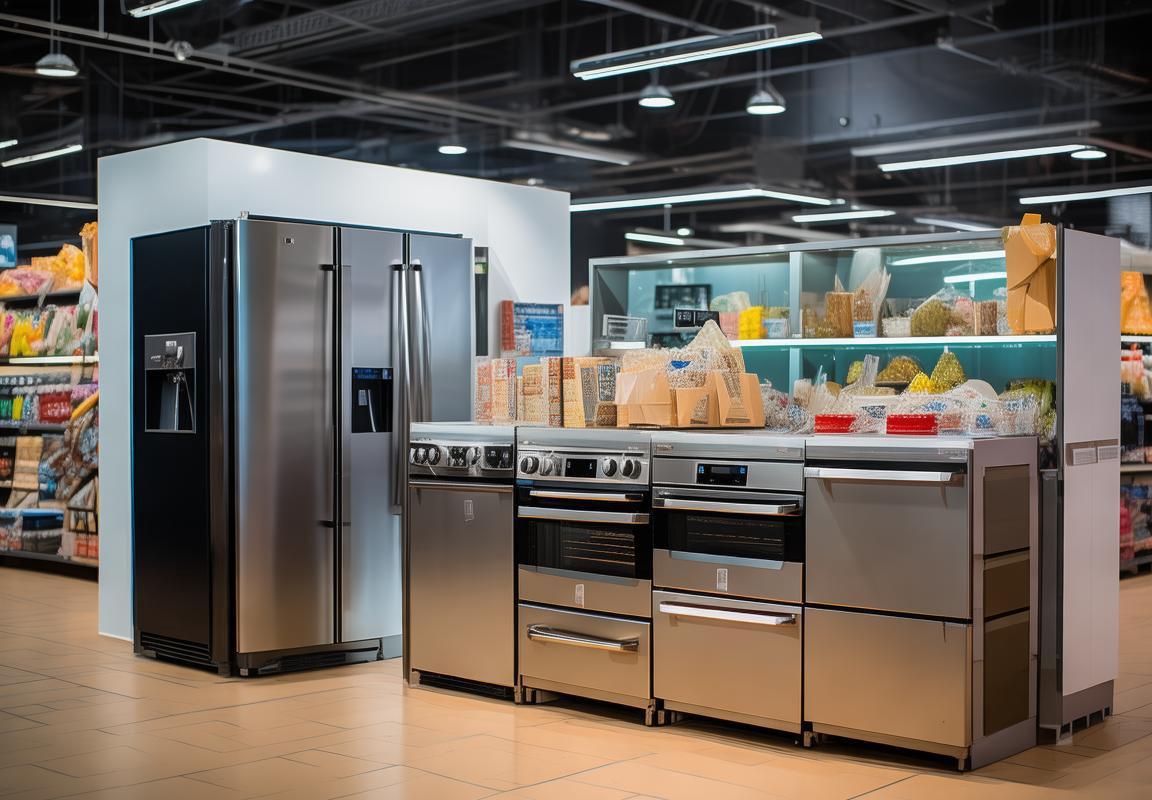
The Rise of Private Label in the European and American Markets
The European and American markets have witnessed a significant surge in the popularity of private label kitchen appliances. This trend has been fueled by a variety of factors, ranging from economic shifts to consumer preferences. Let’s delve into the reasons behind this rise.
Economic factors have played a pivotal role in the growth of private label products. In times of economic uncertainty, consumers often seek more budget-friendly options, and private label appliances offer a cost-effective alternative to branded counterparts. The European market, in particular, has seen a rise in the middle-class population, which has increased the demand for affordable yet quality products.
Consumer behavior has also shifted, with a growing number of shoppers placing a premium on value over brand names. This shift is evident in the increased willingness to purchase private label items, as consumers seek the best deals and often find that private label appliances meet their needs without the premium price tag. The rise of e-commerce has further facilitated this trend, allowing consumers to compare prices and products more easily than ever before.
Another key factor is the evolution of private label product quality. Manufacturers have stepped up their game, ensuring that private label appliances are not only affordable but also reliable and feature-rich. This has helped to break down the stigma associated with private label products, making them a more attractive option for consumers who value quality over brand loyalty.
In the European market, the presence of large retailers has been instrumental in the growth of private label brands. Supermarkets and discount stores have been at the forefront, offering a wide range of private label products that cater to different consumer segments. These retailers have leveraged their buying power to negotiate better prices with manufacturers, resulting in competitive pricing for their customers.
The American market, while somewhat different, has also seen a rise in private label sales. The rise of big-box retailers like Costco and Sam’s Club has contributed to this trend, as these stores offer bulk purchases of private label appliances at lower prices. Additionally, the rise of online marketplaces has allowed smaller private label brands to gain traction and reach a wider audience.
Sustainability has also emerged as a key driver in the growth of private label kitchen appliances. As more consumers become environmentally conscious, they are looking for products that are produced with sustainability in mind. Private label brands often have more flexibility in their supply chains, allowing them to source materials and components that are more eco-friendly than those used by larger, branded manufacturers.
The rise of private label kitchen appliances in the European and American markets is also a reflection of the changing retail landscape. Traditional brick-and-mortar stores are facing increased competition from online retailers, and many have turned to private label brands to differentiate themselves and offer unique value propositions to their customers.
Innovation in packaging and marketing strategies has also played a role in the success of private label brands. Retailers are investing in sleeker, more attractive packaging that appeals to consumers who might otherwise be swayed by branded products. Additionally, the use of digital marketing and social media campaigns has helped to build awareness and credibility for private label brands.
Finally, the rise of private label kitchen appliances can be attributed to the changing demographics and cultural preferences. As the global population becomes more diverse, there is a growing demand for products that cater to specific needs and tastes. Private label brands often have the ability to adapt to these changes more quickly than established brands, which can be a significant advantage in a highly competitive market.
In conclusion, the rise of private label kitchen appliances in the European and American markets is a multifaceted trend driven by economic factors, consumer behavior, evolving product quality, and sustainability concerns. As the retail landscape continues to evolve, it’s likely that private label brands will continue to grow and innovate, offering consumers more choices and value.
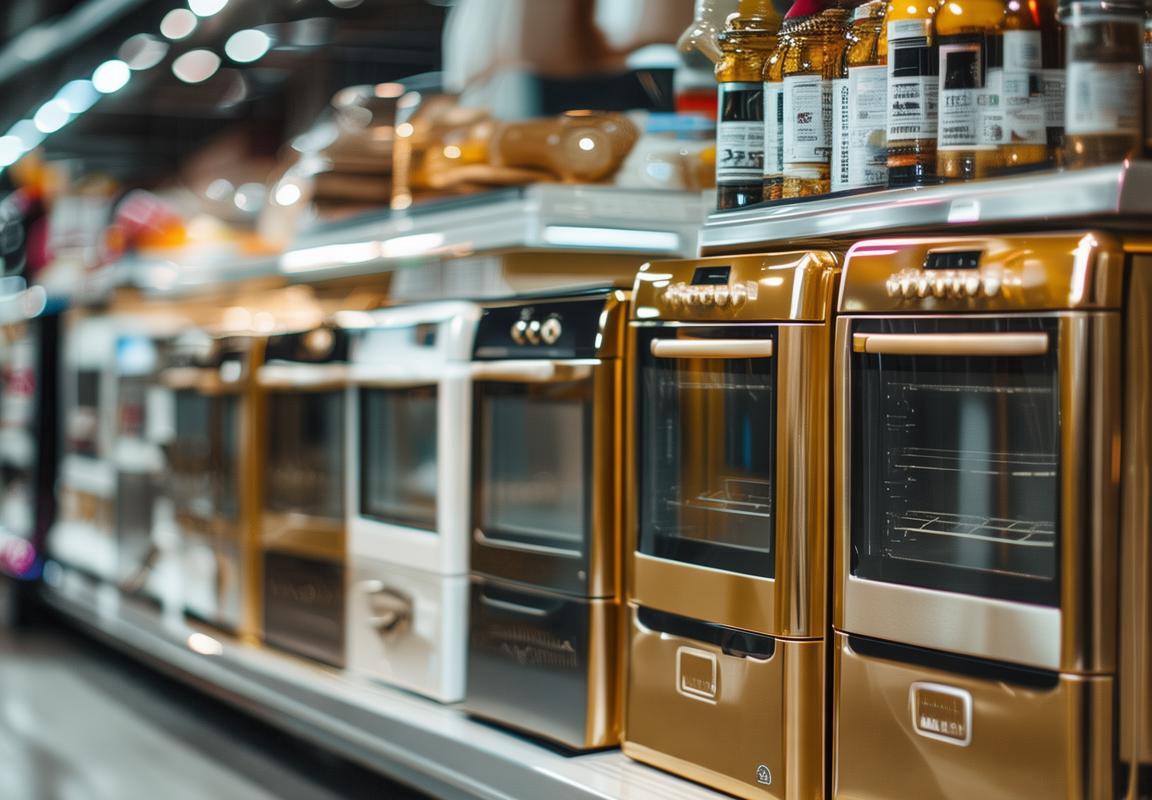
Key Factors Driving the Demand for Private Label Kitchen Appliances
The surge in popularity of private label kitchen appliances in both European and American markets can be attributed to a multitude of factors that have converged to create a thriving landscape for these alternative brands. Here are some of the key elements fueling this demand:
-
Economic Sensitivity: In times of economic uncertainty, consumers often look for more affordable options. Private label brands, with their competitive pricing, offer a cost-effective alternative to premium, well-known brands, making them increasingly appealing during economic downturns.
-
Brand Loyalty Shifts: While brand loyalty has long been a cornerstone of the appliance market, there’s a noticeable shift towards more flexible consumer attitudes. Consumers are now more open to trying different brands, especially when they perceive private label products to be of similar quality at a lower price.
-
Quality Improvement: Over the years, private label kitchen appliances have significantly improved in quality. Modern manufacturing processes and the use of high-quality materials have led to private label products that often match or exceed the performance of their branded counterparts.
-
Supermarket Expansion: The expansion of supermarkets and discount stores has provided a platform for private label brands to gain traction. These retailers often have a strong presence in the market and can leverage their customer base to promote private label appliances.
-
Marketing and Branding Efforts: Private label brands have invested heavily in marketing and branding. They’ve managed to create a sense of value and trust, which has helped to bridge the gap between their products and those of established brands.
-
Technology Integration: The integration of cutting-edge technology into private label appliances has also played a role in their growing popularity. Features like smart connectivity, energy efficiency, and user-friendly interfaces are now common in many private label products.
-
Consumer Convenience: Convenience is a key driver in the appliance market. Private label brands often tailor their products to the specific needs and preferences of consumers, offering a range of options that cater to different lifestyles and budgets.
-
Sustainability and Environmental Concerns: With growing environmental awareness, consumers are more likely to choose appliances that are energy-efficient and environmentally friendly. Private label brands have been quick to capitalize on this trend, offering eco-friendly models that resonate with eco-conscious shoppers.
-
Competitive Pricing: The competitive pricing of private label appliances is a significant draw for consumers. They can purchase high-quality appliances without the premium price tag, which is particularly attractive to price-sensitive consumers.
-
Retailer Support and Distribution: Retailers often provide strong support and distribution channels for private label brands. This includes in-store displays, marketing campaigns, and after-sales service, all of which contribute to the success of private label appliances.
-
Globalization and Supply Chain Efficiency: The globalization of supply chains has allowed private label brands to access a wide range of high-quality components at competitive prices. This has helped them to offer a diverse range of products that cater to various market segments.
-
Innovation and Niche Markets: Private label brands often focus on innovation and niche markets. They can introduce new features or cater to specific consumer needs more quickly than larger, established brands, which may take longer to adapt to market changes.
The demand for private label kitchen appliances in European and American markets is a multifaceted phenomenon, driven by a combination of economic factors, changing consumer preferences, and the strategic efforts of retailers and manufacturers. As these trends continue to evolve, private label brands are likely to maintain their growth trajectory, offering consumers a compelling alternative to traditional appliance brands.
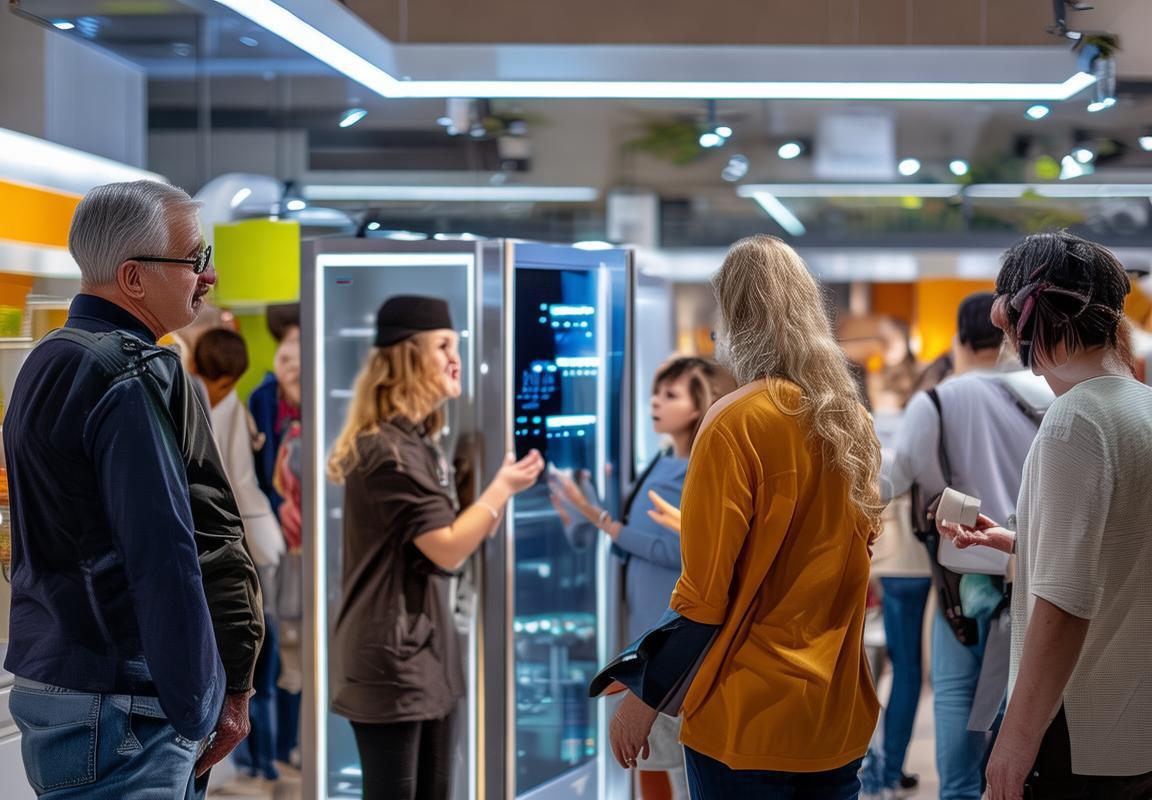
Private Label Kitchen Appliance Packaging: A Strategic Focus
Private label kitchen appliance packaging has emerged as a strategic focus within the industry, reflecting a shift in consumer preferences and market dynamics. This segment is not just about protecting the product during transit; it’s a critical element in shaping brand identity, influencing consumer behavior, and driving sales. Here’s a closer look at the strategic aspects of private label kitchen appliance packaging:
Packaging Design as a Brand Statement
The design of private label kitchen appliance packaging plays a pivotal role in conveying the brand’s values and product attributes. Sleek, modern aesthetics can communicate innovation and quality, while eco-friendly materials might suggest a commitment to sustainability. The use of high-quality imagery and typography can elevate the perceived value of the product, making it stand out on store shelves.
Customization for Market Differentiation
Customization is key in private label packaging. By tailoring the design to fit specific market segments or regional preferences, manufacturers can create a sense of exclusivity and relevance. For instance, incorporating cultural motifs or local language can resonate more strongly with consumers in certain regions, enhancing the appeal of the private label product.
Functionality Meets Aesthetics
Private label kitchen appliance packaging must balance functionality with aesthetics. Features like easy-to-open mechanisms, protective cushioning, and clear product information are essential. However, these elements should not compromise the visual appeal of the packaging. A well-designed package that is both user-friendly and visually engaging can significantly boost consumer confidence and satisfaction.
Sustainability and Eco-Friendly Practices
Sustainability has become a major concern for consumers and businesses alike. Private label packaging is increasingly made from recyclable materials, reducing the environmental impact. Eco-friendly practices, such as using water-based inks or biodegradable materials, not only align with consumer values but can also be a selling point, differentiating the product from competitors.
Cost-Effective Solutions
Private label packaging must also be cost-effective, as it represents a significant portion of the product’s overall cost. Striking a balance between quality and cost is crucial. This often involves sourcing materials from reliable suppliers, optimizing production processes, and exploring bulk purchasing options to keep costs down without compromising on the quality of the packaging.
Retailer Collaboration and Co-Branding
Private label packaging often involves close collaboration with retailers. Retailers may have specific branding guidelines or preferences that influence the design and messaging of the packaging. In some cases, co-branding arrangements can be beneficial, where the retailer’s logo is prominently featured alongside the private label brand, fostering a sense of partnership and trust.
Packaging as a Marketing Tool
Private label kitchen appliance packaging can serve as a powerful marketing tool. By incorporating promotional elements such as discounts, limited-time offers, or product highlights, manufacturers can create urgency and encourage purchases. Additionally, packaging that doubles as a reusable container or display can extend the product’s lifecycle and increase its perceived value.
Consumer Engagement and Interaction
Interactive packaging is becoming more prevalent in the private label space. QR codes, augmented reality (AR) experiences, and educational content can be embedded within packaging to engage consumers and provide additional value. This not only enhances the shopping experience but also encourages brand loyalty and repeat purchases.
Regulatory Compliance and Safety Standards
Private label packaging must adhere to regulatory standards and safety requirements. This includes labeling that is clear and informative, as well as packaging that is free from harmful substances. Ensuring compliance is not only a legal requirement but also a way to build trust with consumers who are increasingly concerned about the products they bring into their homes.
In conclusion, private label kitchen appliance packaging is a strategic focus that encompasses design, sustainability, cost-effectiveness, and marketing. By carefully considering these factors, manufacturers can create packaging that not only protects the product but also builds brand equity and drives sales in a competitive market.
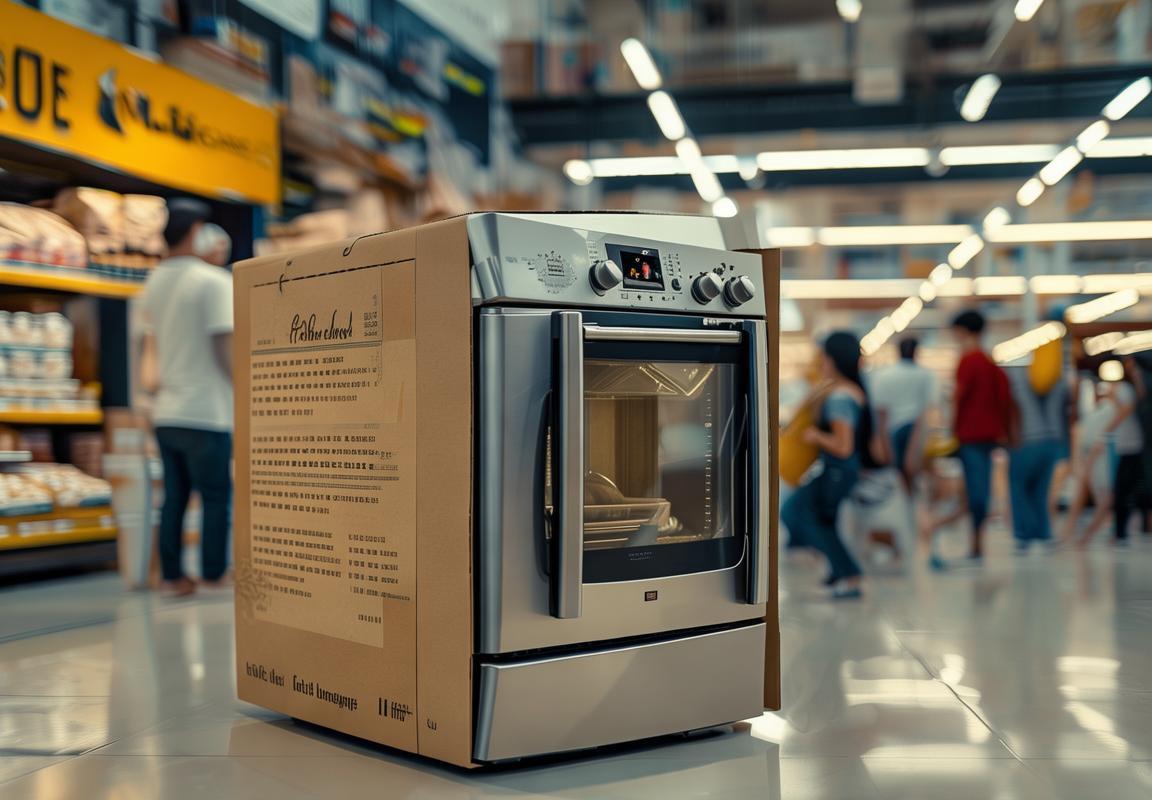
Design and Sustainability: The Cornerstones of Effective Packaging
In the competitive landscape of private label kitchen appliance packaging, the intersection of design and sustainability has emerged as a pivotal strategy for brands aiming to stand out. This fusion is not just about aesthetics; it’s about creating packaging that resonates with environmentally conscious consumers and enhances the overall product experience.
The shift towards sustainability in packaging design is a direct response to consumer demands. With increasing awareness of environmental issues, consumers are gravitating towards brands that demonstrate a commitment to eco-friendliness. Private label kitchen appliances, which often cater to a broader market segment, have recognized this trend and are adapting their packaging strategies accordingly.
One of the key aspects of sustainable packaging is the use of recycled materials. Brands are exploring various sources of recycled materials, from post-consumer plastics to sustainably managed forests for paper and cardboard. This not only reduces the carbon footprint but also sends a strong message about the brand’s values to the consumer.
Design plays a crucial role in making sustainable packaging effective. It’s not just about what materials are used but how they are used. Innovative design can transform packaging from a mere container into a tool for storytelling and brand differentiation. For instance, packaging that incorporates recycled materials can be cleverly highlighted through color coding or embossing, making it visually appealing while also being informative.
Moreover, sustainable design often focuses on reducing the overall volume of packaging. This can be achieved through the use of thinner materials, which not only reduces waste but also minimizes the resources required for production. The challenge lies in ensuring that these changes do not compromise the integrity of the product or the consumer’s perception of quality.
Functionality is another critical element in effective packaging design. It’s not enough to have a sustainable product; the packaging must also protect the appliance during transportation and storage. This requires a balance between environmental considerations and practicality. For example, the use of air pillows made from recycled materials can provide adequate protection without adding unnecessary bulk.
Packaging design also needs to be adaptable to different market segments. In Europe and America, where cultural differences can be stark, the design of private label kitchen appliances should reflect the specific preferences and values of each region. This might mean incorporating regional motifs or symbols into the packaging, or even using language that resonates with local consumers.
The role of branding in packaging design cannot be overstated. A well-crafted brand identity can elevate a product from being just another private label to a recognized and respected brand. Sustainable packaging design offers an opportunity to communicate the brand’s ethos in a tangible way. By showcasing eco-friendly practices, brands can build trust and loyalty among consumers who prioritize sustainability.
Innovation in packaging design is also a driving force behind its effectiveness. Advanced printing techniques, such as flexography and offset printing, allow for vibrant and detailed designs that can capture the consumer’s attention. Additionally, the use of digital printing enables customization, which can be particularly beneficial for private label brands looking to cater to niche markets.
However, it’s important to note that sustainability should not come at the cost of consumer convenience. Packaging design must strike a balance between environmental responsibility and ease of use. This might involve simplifying the unboxing process, ensuring that packaging is easy to recycle, or providing clear instructions for disposal.
The integration of technology into packaging design is another area of innovation. Smart packaging, for example, can provide real-time information about the product or its usage, enhancing the consumer experience. This could include QR codes that link to product manuals, maintenance tips, or even recipes for the appliance.
In conclusion, the strategic focus on design and sustainability in private label kitchen appliance packaging is a multifaceted approach that addresses consumer demands, environmental concerns, and brand differentiation. By blending aesthetics, functionality, and eco-consciousness, brands can create packaging that not only protects the product but also communicates a strong and compelling brand story.
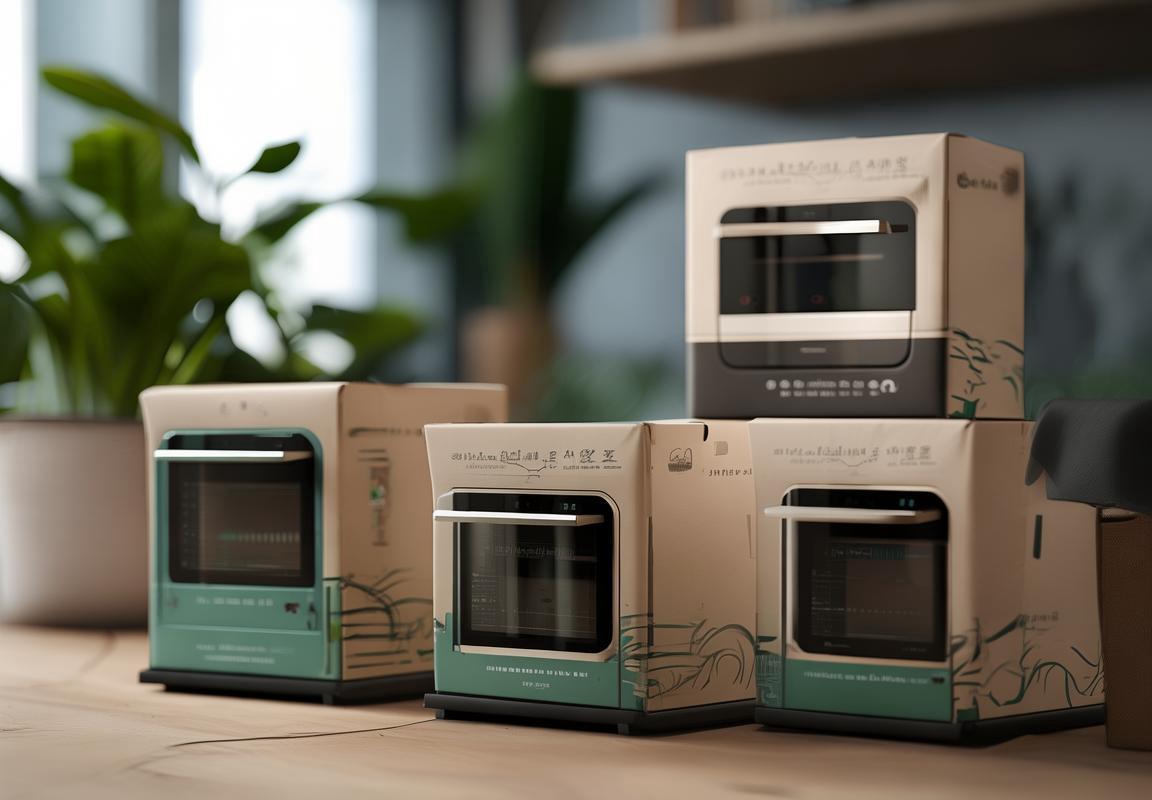
Consumer Perception and Brand Differentiation
In today’s competitive kitchen appliance market, consumer perception and brand differentiation play a pivotal role in shaping the success of private label products. Understanding how consumers perceive these products and how brands can stand out is crucial for manufacturers looking to capture market share.
Consumers often view private label kitchen appliances as a more affordable alternative to branded products, but this perception is evolving. The reasons behind this shift are multifaceted, starting with the growing emphasis on sustainability and environmental responsibility.
Sustainability is not just a buzzword; it’s a core value that influences consumer purchasing decisions. Private label brands that prioritize eco-friendly materials and manufacturing processes are gaining traction as consumers become more aware of their carbon footprint. Packaging that is recyclable, biodegradable, or made from recycled materials is no longer a niche feature but a standard expectation.
Brand differentiation becomes a challenge when the primary selling point is price. However, savvy private label brands are finding creative ways to set themselves apart. One such method is through design. High-quality, sleek designs can elevate the perceived value of a product, making it more appealing to consumers who are looking for both style and functionality.
Another aspect of brand differentiation is storytelling. Private label brands are increasingly investing in marketing campaigns that tell a narrative, whether it’s about the brand’s origins, its commitment to quality, or its role in the community. This narrative can resonate with consumers on an emotional level, fostering brand loyalty.
Functionality also plays a significant role in consumer perception. Private label appliances that offer innovative features or unique solutions to common kitchen challenges can differentiate themselves from competitors. For example, smart appliances with intuitive interfaces or appliances that are designed to save energy and reduce waste stand out in a crowded market.
The role of technology in brand differentiation cannot be overstated. Smart home integration, connectivity, and user-friendly interfaces are becoming more common in kitchen appliances. Private label brands that embrace these technological advancements can position themselves as cutting-edge and forward-thinking.
Consumer perception is also shaped by the shopping experience. Private label brands that offer a seamless and enjoyable shopping experience, whether in-store or online, can build a positive brand image. This includes factors like clear product information, user-friendly websites, and responsive customer service.
Word-of-mouth recommendations and online reviews have a substantial impact on consumer perception. Private label brands that encourage satisfied customers to share their experiences and actively manage their online reputation can significantly influence how consumers view their products.
Lastly, the packaging itself can be a powerful tool for brand differentiation. Attractive, informative, and sustainable packaging can draw attention to the product and convey a sense of quality and care. Private label brands that invest in premium packaging solutions are often perceived as offering a higher-quality product.
In conclusion, consumer perception and brand differentiation in the private label kitchen appliance market are intertwined. By focusing on sustainability, design, storytelling, functionality, technology, the shopping experience, word-of-mouth, and packaging, private label brands can create a strong identity and appeal to today’s discerning consumers.

Innovation in Private Label Packaging: Trends and Technologies
In the ever-evolving landscape of the kitchen appliance market, innovation in private label packaging has become a pivotal factor for brands looking to stand out. From eco-friendly materials to cutting-edge printing techniques, the trends and technologies shaping private label packaging are not only enhancing the consumer experience but also reflecting the broader shift towards sustainability.
Packaging as a Statement of SustainabilityEco-conscious consumers are increasingly seeking products that align with their values, and private label packaging is responding by adopting materials that are not only recyclable but also biodegradable. Cardboard, recycled plastics, and plant-based films are becoming more prevalent, signaling a commitment to environmental responsibility.
Smart Packaging for Enhanced Consumer EngagementSmart packaging technologies are gaining traction in the private label sector, offering interactive features that engage consumers beyond the product’s utility. QR codes, augmented reality (AR) experiences, and digital shelf labeling are being integrated into packaging designs to provide consumers with additional information, recipes, and even maintenance tips.
Customization and PersonalizationThe ability to customize packaging is another trend gaining momentum. Private label brands are using data analytics to tailor packaging designs to specific consumer preferences, demographics, or even seasonal trends. This level of personalization not only resonates with consumers but also helps in building a stronger brand identity.
Sustainability Through LightweightingOne of the significant advancements in packaging technology is the move towards lightweighting. By reducing the weight of packaging materials, brands are not only cutting down on transportation costs but also minimizing the environmental footprint. Advanced materials and design techniques are being employed to maintain structural integrity while shedding pounds.
Packaging as a Tool for Brand DifferentiationPrivate label brands are leveraging packaging as a means to differentiate themselves from competitors. Unique designs, innovative shapes, and premium finishes are being used to create a visual impact that sets their products apart on the shelf. This approach not only attracts consumers but also encourages repeat purchases.
The Integration of Packaging with Digital PlatformsThe intersection of packaging with digital platforms is a trend that’s gaining steam. Brands are exploring ways to create packaging that complements their online presence, allowing for seamless integration between physical and digital shopping experiences. This could include packaging that doubles as a digital interface or packaging that can be easily scanned for online access to additional content.
Advanced Printing Techniques for Aesthetics and FunctionalityAdvanced printing techniques, such as offset, flexography, and digital printing, are being used to enhance the aesthetic appeal of private label packaging while also improving functionality. High-resolution graphics, metallic inks, and embossing are some of the methods being employed to create eye-catching designs that also stand up to the rigors of shelf life and transportation.
The Use of Recycled and Upcycled MaterialsBrands are exploring the use of recycled and upcycled materials to create packaging that is both unique and sustainable. This includes materials like recycled paper, glass, and metal, which are being repurposed in innovative ways to create packaging that is not only eco-friendly but also a conversation starter.
Packaging that Educates and Empowers ConsumersPrivate label packaging is increasingly serving an educational role, providing consumers with information about the product’s origin, ingredients, and usage. This not only empowers consumers to make informed choices but also builds trust in the brand.
The Future of Private Label PackagingLooking ahead, the future of private label packaging is likely to be defined by continued innovation in materials, design, and technology. As consumer expectations evolve, so too will the strategies employed by private label brands to meet these demands. The key will be to balance aesthetics, functionality, and sustainability to create packaging that not only protects the product but also tells a compelling brand story.
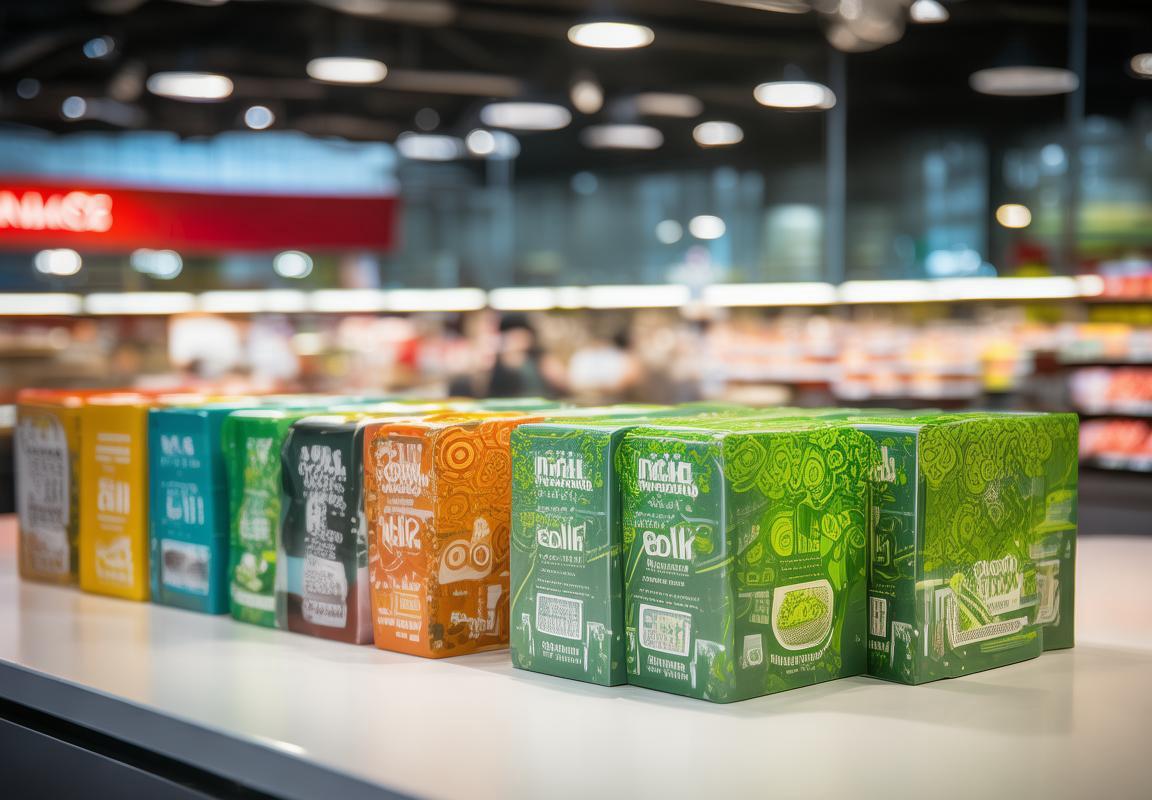
Challenges and Opportunities in the Private Label Kitchen Appliance Packaging Sector
In the ever-evolving landscape of private label kitchen appliance packaging, several challenges and opportunities have emerged that shape the sector’s future. From navigating environmental concerns to embracing technological advancements, the industry faces a complex tapestry of hurdles and possibilities.
The environmental impact of packaging is a significant challenge that private label brands must address. Consumers are increasingly conscious of sustainability, and the packaging of kitchen appliances is no exception. Brands that fail to adopt eco-friendly materials and practices risk alienating environmentally conscious consumers, while those that do can gain a competitive edge by promoting their green initiatives.
Another challenge lies in the constant need for innovation to keep up with market trends. As consumer preferences shift, packaging must evolve to remain relevant. This requires a steady stream of creative solutions that can enhance the user experience, protect the product, and communicate the brand’s values effectively.
On the flip side, opportunities abound for those willing to embrace change. One such opportunity is the rise of e-commerce, which has expanded the reach of private label brands. Packaging must now cater not only to in-store presentation but also to the unboxing experience, which can significantly influence customer satisfaction and brand perception.
The integration of technology into packaging design presents yet another opportunity. Smart packaging, for instance, can provide real-time information to consumers, enhancing the product experience and fostering brand loyalty. This technology can also help manufacturers track product performance and shelf life, reducing waste and improving efficiency.
Moreover, the globalization of the market has opened doors for private label brands to explore new geographical markets. However, this expansion comes with its own set of challenges, including adapting packaging to comply with different cultural norms and regulatory requirements.
One key opportunity in this sector is the customization of packaging to cater to niche markets. By offering tailored packaging solutions, brands can appeal to specific consumer groups with unique needs or preferences. This level of personalization can strengthen customer loyalty and differentiate the brand from competitors.
The challenge of maintaining cost-effectiveness without compromising on quality or sustainability is a delicate balance that private label brands must navigate. Finding innovative ways to reduce costs without sacrificing the integrity of the packaging can lead to significant savings and increased profitability.
Additionally, the opportunity to leverage data analytics in packaging design cannot be overlooked. By analyzing consumer behavior and preferences, brands can create packaging that resonates with their target audience. This data-driven approach can also help optimize packaging design for various distribution channels, from retail stores to online platforms.
The challenge of counterfeit products is another area where private label brands must be vigilant. Effective packaging design can help deter counterfeiters by incorporating anti-counterfeiting features that are difficult to replicate. This not only protects the brand’s reputation but also ensures that consumers receive genuine products.
In the realm of sustainability, the opportunity to reduce packaging waste is significant. Brands that explore biodegradable or compostable materials, or that design packaging that can be reused or recycled, are not only contributing to a healthier planet but also appealing to consumers who prioritize sustainability.
The challenge of keeping up with the rapid pace of technological advancements is immense. Brands must invest in research and development to stay ahead of the curve. This includes staying abreast of new materials, printing techniques, and manufacturing processes that can enhance packaging performance and reduce environmental impact.
Lastly, the opportunity to collaborate with other stakeholders in the supply chain is a powerful tool for private label brands. By working together with packaging suppliers, retailers, and even consumers, brands can create a more cohesive and efficient packaging ecosystem that benefits everyone involved.
In conclusion, the private label kitchen appliance packaging sector is ripe with challenges and opportunities. By addressing environmental concerns, embracing innovation, and leveraging data analytics, brands can navigate the complexities of the market and emerge stronger and more sustainable.

Case Studies: Successful Private Label Kitchen Appliance Packaging Strategies
In the world of private label kitchen appliance packaging, there are several case studies that highlight successful strategies that have resonated with consumers and driven sales. From sleek, minimalist designs to eco-friendly materials, these examples showcase the art of packaging that not only protects the product but also enhances the brand’s image and differentiates it in a crowded market.
The packaging for the “EcoGlide” line of kitchen appliances by GreenHome Brands stands out for its commitment to sustainability. Utilizing recycled materials and soy-based inks, the packaging is not only eco-friendly but also communicates the brand’s dedication to the environment. The clean, minimalist design with a subtle green accent not only reflects the product’s eco-consciousness but also appeals to consumers who prioritize sustainability in their purchases.
The “SmartChef” collection by TechGadgets Co. has seen success with its innovative use of augmented reality (AR) in packaging. By scanning a QR code on the box, customers can view a virtual demonstration of the appliance in action. This interactive experience not only educates the consumer about the product but also creates a memorable brand interaction that can lead to increased sales and brand loyalty.
For the “UrbanChef” line of compact kitchen appliances by CityLiving Brands, the packaging strategy focuses on convenience and portability. The boxes are designed to be easily recycled, with foldable structures that reduce material waste. The use of bold colors and clear, concise imagery communicates the product’s appeal to urban dwellers who are looking for space-saving solutions without compromising on functionality.
In the case of “HealthyLiving” kitchen appliances by Wellness World, the packaging plays a key role in differentiating the brand from competitors. The packaging is crafted from biodegradable materials, and it features a clear window that allows customers to see the appliance inside. This not only showcases the product’s sleek design but also reinforces the brand’s commitment to health and wellness.
The “ClassicCraft” collection by Vintage Innovations has leveraged the nostalgia factor in their packaging design. The boxes are reminiscent of classic kitchenware from the past, with retro fonts and imagery that evoke a sense of tradition and quality. This approach has struck a chord with consumers who appreciate the blend of modern technology with vintage aesthetics.
The “SmartKitchens” series by KitchenGenius has embraced the importance of smart technology in their packaging. The boxes are designed to be opened with a single motion, revealing a user-friendly guide to the appliance’s smart features. This packaging strategy not only enhances the unboxing experience but also sets the stage for a positive first impression of the brand.
For “FamilyHome” kitchen appliances by FamilyLife Brands, the packaging focuses on the brand’s core audience: families. The boxes are large enough to hold multiple appliances, and the packaging includes educational materials about kitchen safety and meal planning. This family-oriented approach has helped the brand build a loyal customer base by addressing the unique needs of family shoppers.
In the case of “Simplicity” kitchen appliances by ZenLiving Brands, the packaging reflects the minimalist philosophy of the company. The boxes are simple and uncluttered, with minimal text and a focus on the product’s essential features. This minimalist aesthetic speaks to consumers who prefer a clutter-free home environment and appreciate products that are straightforward and easy to use.
The “GlobalGourmet” line of kitchen appliances by Culinary Cultures Inc. has successfully used packaging to bridge cultural gaps. The boxes feature detailed descriptions and recipes from various cuisines, appealing to consumers with a global palate. This strategy has helped the brand become a go-to choice for those interested in international cooking.
The “EcoChic” collection by EcoChic Appliances has managed to combine luxury with sustainability in their packaging. The boxes are crafted from premium, sustainable materials that are as visually appealing as they are environmentally friendly. This approach has resonated with consumers who value both high-end design and eco-consciousness.
These case studies demonstrate the power of packaging in the private label kitchen appliance sector. By focusing on design, sustainability, and brand differentiation, these companies have not only enhanced their product’s appeal but also fostered a strong connection with their target customers. Whether through innovation, convenience, or cultural relevance, these strategies highlight the importance of packaging as a key differentiator in a competitive market.
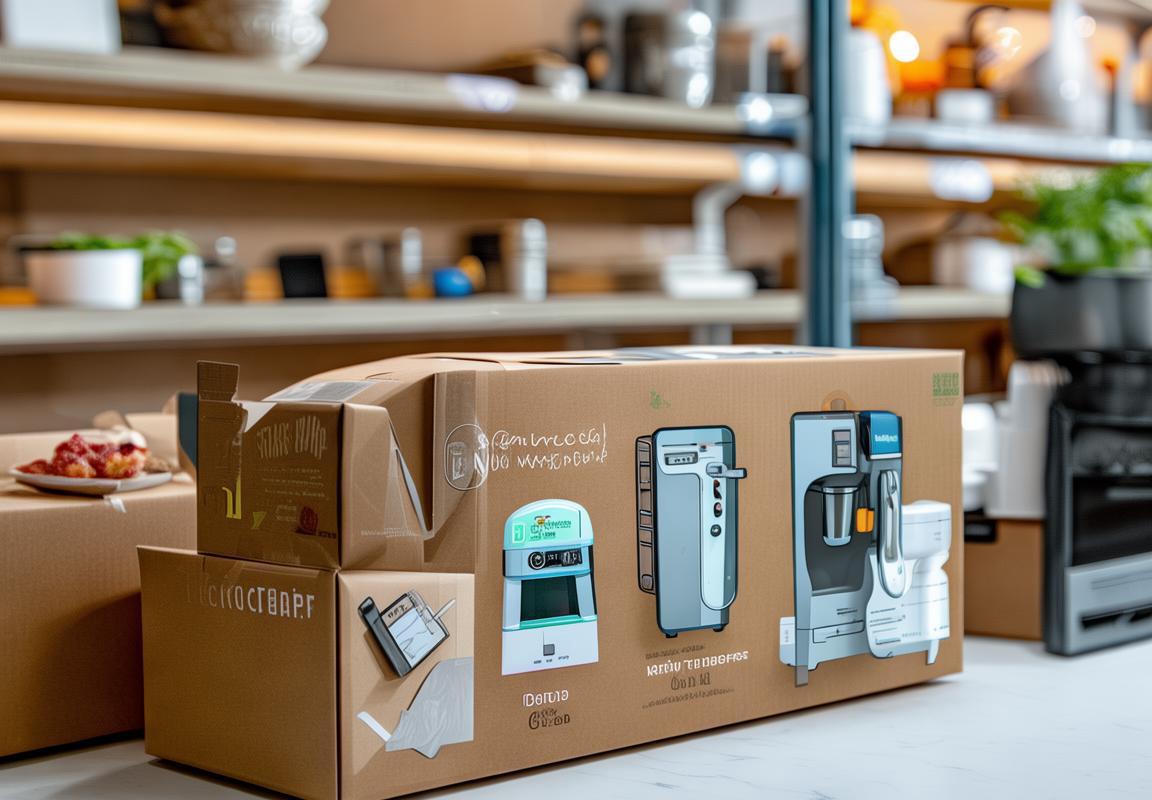
The Future Outlook: Predictions and Opportunities for Growth
In the ever-evolving landscape of the kitchen appliance market, predictions and opportunities for growth are shaping the future outlook. As private label brands continue to gain traction, understanding the potential for expansion and the challenges that lie ahead is crucial. Here’s a glimpse into what might be in store:
Consumer Behavior ShiftsThe way consumers shop and the products they seek are rapidly changing. With a growing emphasis on sustainability and eco-friendly options, private label brands have the chance to capitalize on these shifts. As consumers become more conscious of their carbon footprint, they’re likely to turn to private label kitchen appliances that offer energy efficiency and environmentally friendly packaging.
Technological IntegrationThe integration of technology into kitchen appliances is not just a luxury but a necessity. Smart appliances that can be controlled remotely, offer real-time diagnostics, and provide energy-saving features are becoming more popular. Private label brands that can incorporate these technologies into their offerings will stand out in the market.
Global Market ExpansionPrivate label kitchen appliance brands are not confined to their local markets. The global landscape presents numerous opportunities for growth. As these brands expand internationally, they must adapt to local preferences and regulations, which can lead to innovative packaging solutions and a broader customer base.
Sustainability and RecyclabilityThe push towards sustainability is a game-changer for the packaging industry. Brands that invest in sustainable materials and recyclable packaging are not only doing their part for the environment but are also aligning with consumer values. This focus can open new markets for private label brands looking to differentiate themselves.
Collaborations and PartnershipsCollaborations with local suppliers and manufacturers can be a strategic advantage for private label brands. By forming partnerships, brands can gain access to regional expertise, reduce costs, and enhance their supply chain efficiency. This can lead to more competitive pricing and improved product quality.
Digital Marketing and E-commerceThe rise of e-commerce has transformed how consumers purchase kitchen appliances. Private label brands that excel in digital marketing and e-commerce will see significant growth opportunities. A strong online presence, coupled with targeted marketing campaigns, can help these brands reach a wider audience.
Regulatory ComplianceNavigating the complex web of regulations is a challenge for any brand. However, for private label kitchen appliance brands, compliance can also be an opportunity. By ensuring that their products and packaging meet all necessary standards, brands can build trust with consumers and avoid potential legal issues.
Customization and PersonalizationConsumers today are looking for products that cater to their unique needs and preferences. Private label brands that offer customization and personalization options can attract customers who value a tailored shopping experience. This could involve offering different finishes, sizes, or even modular designs.
Competitive PricingPrivate label brands often compete on price. To maintain a competitive edge, these brands must find ways to produce cost-effective products without compromising on quality. This might involve streamlining production processes, sourcing materials efficiently, or leveraging economies of scale.
Brand StorytellingThe story behind a brand can be a powerful differentiator. Private label brands that invest in storytelling, whether through social media campaigns, packaging design, or community engagement, can create a stronger emotional connection with consumers. This connection can lead to brand loyalty and repeat purchases.
Emerging MarketsEmerging markets, particularly in Asia and Africa, present a vast opportunity for growth. These regions have a growing middle class with increasing disposable income, creating a demand for kitchen appliances. Private label brands that can enter these markets with products that meet local needs and budgets will find fertile ground for expansion.
Long-term VisionTo capitalize on these opportunities, private label brands must have a long-term vision. This involves investing in research and development, staying abreast of market trends, and being adaptable to change. By focusing on continuous improvement and innovation, these brands can secure a sustainable future in the kitchen appliance market.